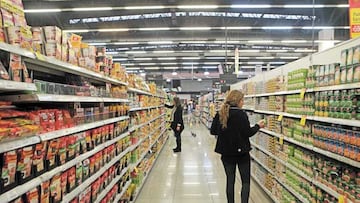How are products ordered in the supermarket? This is how the ‘full cart’ effect works
The products bought on impulse are usually at the entrance, while those household essentials are located at the far end of the store.

The distribution of products in a supermarket is not chosen randomly, nor by a simple decision of the shelf-stacker in question. Shoppers’ consumption habits, as well as the type of purchase made by the customer, play a decisive role.
In all supermarkets the distribution varies slightly. Products are not located in the same place in Walmart as there are in Costco because each supermarket works with a specific marketing strategy to reach consumers.
However, some of them share certain traits. In general, essential products such as meat, fish, dairy products, bread and water are located at the far end of the store. In this way, the products that are most often purchased are found at the far side of the supermarket, forcing the customer to go along the entire aisle. This is designed to encourage shoppers to pick up some additional items.
The same is true of those products that are bought on impulse next to the tills, such as chocolate bars or chewing gum.
With regard to the rest of the products, there are some that are not as necessary as staple foods and that have a good location on the shelf. Normally, these products that are more expensive than the essential ones and so justify their prominence by boosting company profits. Similarly, particularly popular brands or products may find their way into a good shelf location because the store can be confident that it will receive a lot of interest.
Speaking to Business Insider, retail marketing expert Neus Díaz explained that fruit and vegetables are found at the beginning of the store to give a positive impression when customers walk in. “It’s done to give the supermarket a fresh feeling,” he said.
More than half of purchase decisions are unplanned decisions
According to the ‘Study of consumer trends’, published by the Ministry of Industry, Commerce and Tourism, up to 54.2% of perishable food purchases are made in the supermarket and 77% of non-perishable food.
On the other hand, a study published by the magazine BMC claims that more than half of purchase decisions are unplanned decisions at first. This research also argues that in-store environmental initiatives that promote healthy food choices “have significant potential to improve diet-related behaviors and reduce the risk of disease at the population level.”
Major supermarket chains undoubtedly wield considerable power when it comes to influencing shoppers’ decisions and typically attempt to push the most popular and profitable products towards us.





